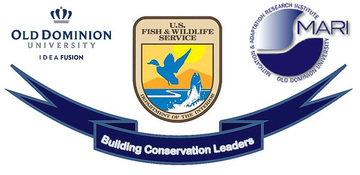Summer 2018: Sustainability Leadership
Class 1 (05/14/2018): Part 1: Introduction to the course; Part 2: Sustainability leadership; Part 3: Setting up the projectsPrologue: Introduction to the courseThe class is a Service Learning class, which implies that the students will work in small groups on real-world projects throughout the class. During each class, we will have a part that is related to the theory of sustainability leadership and relevant skills, and another part that relates to working on the projects. We have defined three “real-world challenges” related to the impacts of climate change, sea level rise, and human pressure on the Everglades National Park. In the sustainability leadership part of each class, we will discuss a number of questions in the sustainability leadership part. Please, be prepared to participate in the discussion of these questions, which requires to read the listed documents prior to the class. In the “real-world challenges” part of each class, the students will carry out research related to their challenge, prepare the fieldwork, and draft the research paper. During the fieldwork week, they will continue the research, prepare a presentation each, further develop the report, and collect material for a brief video (each student is required to prepare a 2-min video). After the fieldwork, the research paper will be finalized. Part 1: Sustainability leadershipDefining sustainability leadership can be done by asking a number of questions.
Sustainability leadership requires an understanding of the challenges to sustainability and developing viable strategies to meet these challenges and maintain the community embedded in the life-support system. This requires:
Reading ListMandatory readings: Torres (2017) (Torres, P., 2017. It’s the end of the world and we know it: Scientists in many disciplines see apocalypse, soon. Salon.) Miller (2013) (Miller, T. R., 2013. Constructing sustainability science: emerging perspectives and research trajectories, Sustainability science, 8(2), 279-293.) Ward et al. (2017) (Ward, J., Chiveralls, K., Fioramonti, L., Sutton, P., Costanza, R., 2017. The decoupling delusion: rethinking growth and sustainability. The Conversation.) Haque (2018) (Haque, U., 2018. Why capitalism is obsolete - and why humanity's future depends on what's next. Eudaimonia & Co., March 26, 2018.) Additional Readings Lu (2017) (Lu, D., 2017. We would need 1.7 Earths to make our consumption sustainable. Washington Post) Ropeik (2015) (Ropeik, D., 2015. The Threat To Life On Earth Because Human Instinct is More Powerful Than Reason.) Gee, B., 2011. Economic Crisis and the Normalcy Bias. See https://www.nolanchart.com/article8861-economic-crisis-and-the-normalcy-bias.html. Mercier and Sperber (2017) (Mercier, H., and Sperber, D., 2017. The Enigma of Reason. Harvard University Press, Cambridge, Massachusetts. ) Biermann (2014) (Biermann, F., 2014. Earth System Governance: world politics in the anthropocene. Massachusetts Institute of Technology.) Part 2: Setting up the projectsThe three “real-world challenges” we will work on as part of the service learning are:
For all three challenges, the time window to be considered should be on the order of 30 to 80 years (2050 to 2100). It will be important to link the three challenges together. Thus, (1) will provide information ESS in Florida Bay to (2). (2) will provide information on morphology changes in Florida Bay due to sea level rise to (1) and (3) and also provide scenarios for the American Crocodile population to thee two groups. (3) will provide socio-economic impact scenarios to (1) so that their relative importance can be compared to climate change and sea level rise impacts. The students will form three groups of three students around these challenges. It is required to apply the adaptation science approach to the topic. It will be important to distribute the chapters between the students. All students will contribute to all chapters, but individual students will be leading each chapter. Initially, each group will exchange thoughts on how to collect relevant information. Each group will assess how they want to approach the topic and distribute the work among the group members. In this first class, we will constitute three groups with three students each. In each group, the students will decide on responsibilities for the various chapters of the project reports. Each report has six chapters, and each student will be responsible for two of these chapters. Reading ListFlorida Fish and Wildlife Conservation Commission (2016) Management of Florida’s Fish and Wildlife Species and Their Habitats. Version 1. Florida Fish and Wildlife Service. Available at html. |
